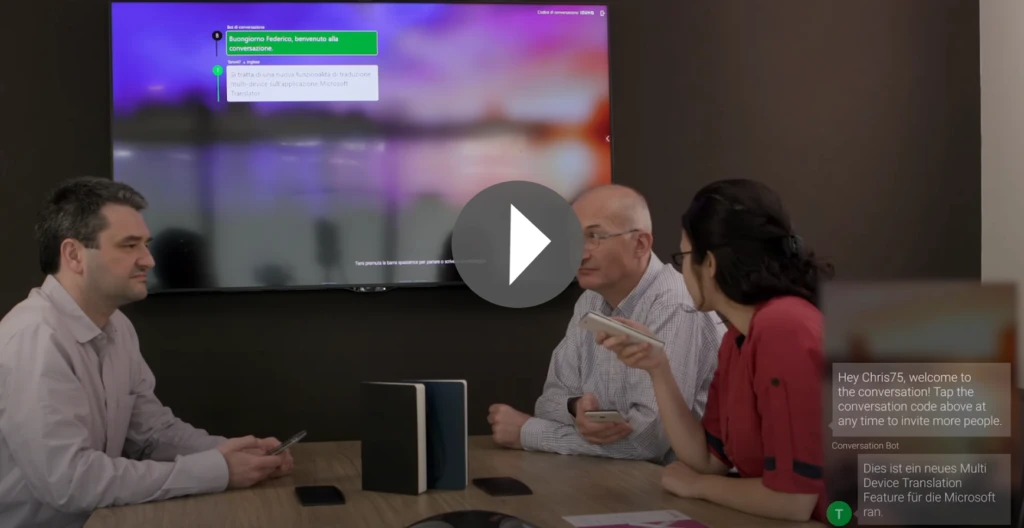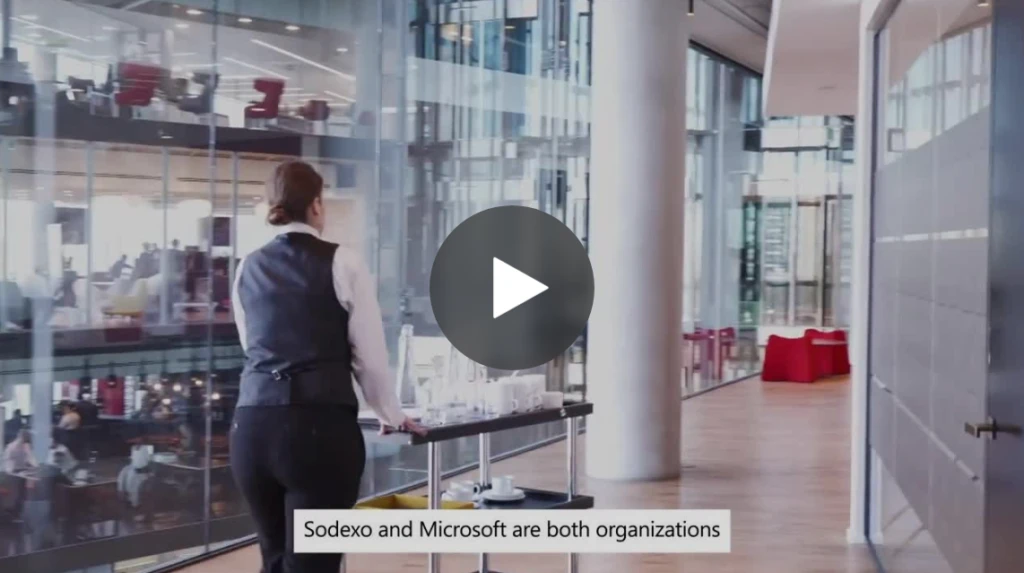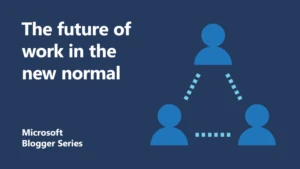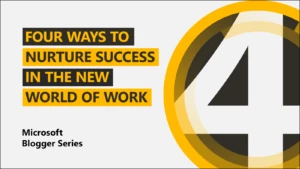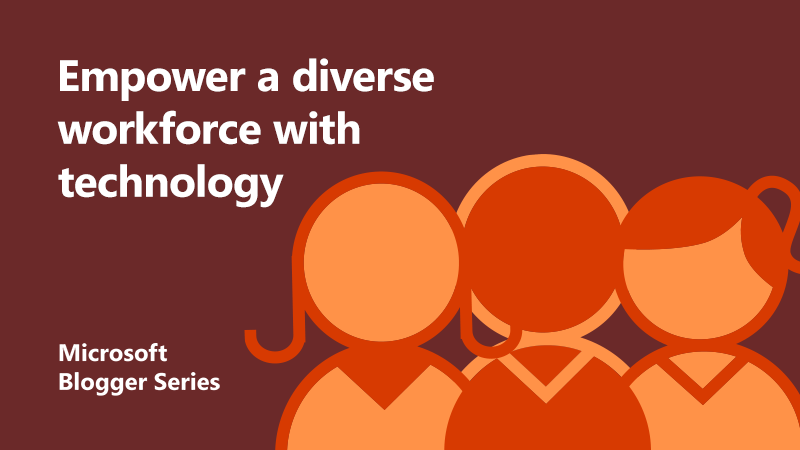
Empowering your diverse frontline workforce with inclusive technology

If I told you, that one in five of your most crucial workforce, the one who spends the most time speaking to your customers, doesn’t have the right tools to do their jobs, would you believe me? Frontline workers are the first people to see your brand, interact with your customers and ultimately, the ones who leave a lasting impression. Customers rely on the services our frontline workforce provide. Your business depends on the operational tasks they perform. And finally, your brand and reputation is based on their success.
What are you missing if you are not connecting to the people who are seeing your customers every day? A huge opportunity to innovate and improve business operations. I see Microsoft’s role as a tech provider to build the technology that helps everyone do their best work, including frontline workers. For organisations, your role is to create an inclusive culture where everyone can be at their best. Accessible tools help you foster this culture. Here’s how you can empower your frontline workforce using accessible tools.
The diversity of the frontline workforce
A billion people in the world have some sort of disability. Let that sink in.
Today, I am focussing on tools that can help those with hidden disabilities, literacy, and language. It’s important to understand that accessible tools level the playing field for all. Organisations who have improved productivity, employee wellbeing, and innovation are ones with an inclusive culture. They support their employees and give them confidence to be their best selves in the workplace.
Therefore, enabling these accessible tools is an opportunity for organisations. You are addressing challenges faced by your people. You’re also empowering them to be confident and building an innovative, inclusive workforce.
Hidden disabilities
80 percent of people who are disabled have hidden impairments. And often people don’t feel comfortable bringing them up. For example, 73 percent of people with dyslexia don’t tell their employers. But when you have accessible tools built into your systems, everyone is on a level playing field to access the resources they need in their own way.
Immersive Reader is a tool found in most of Microsoft 365 apps. For example, an employee can use it in Teams to make it easier for them to read company announcements, messages, and documents.
Literacy
According to the US National Skills Coalition, 60 percent of service sector workers have limited literacy skills. In the UK, the National Literacy Trust says over 7 million people can be described as having ‘very poor literacy skills’.
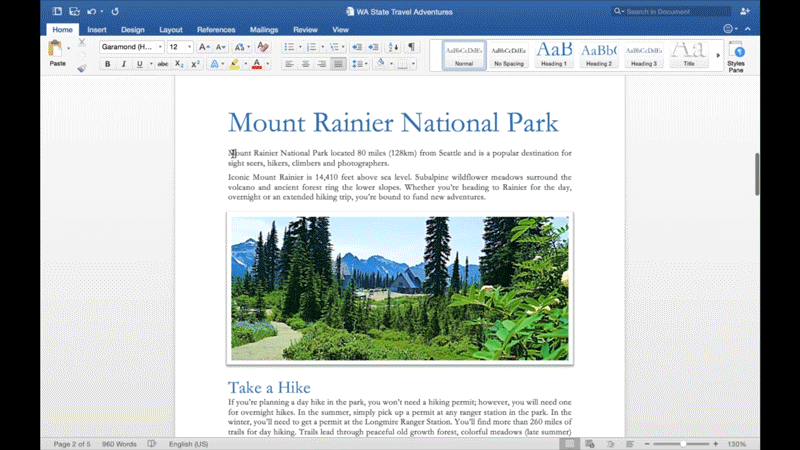
Using Microsoft Teams and Shifts on personal mobile devices empowers workers to be able to use your software in their own way. They can take advantage of accessible tools such as Read Aloud and Smart Lookup to ensure they understand the information as it’s presented to them.
Language
Frontline workers will be interacting with people from different backgrounds and with different first languages. In fact, 38 percent of people in the UK over five speak at least one other language.
Microsoft Translator is a powerful tool that can translate written text or spoken word to the relevant language.
For those frontline workers in manufacturing, 80 percent have noise related hearing loss. Enabling automatic captions can ensure that everybody gets the same information at the same time and can fully take part in team meetings.
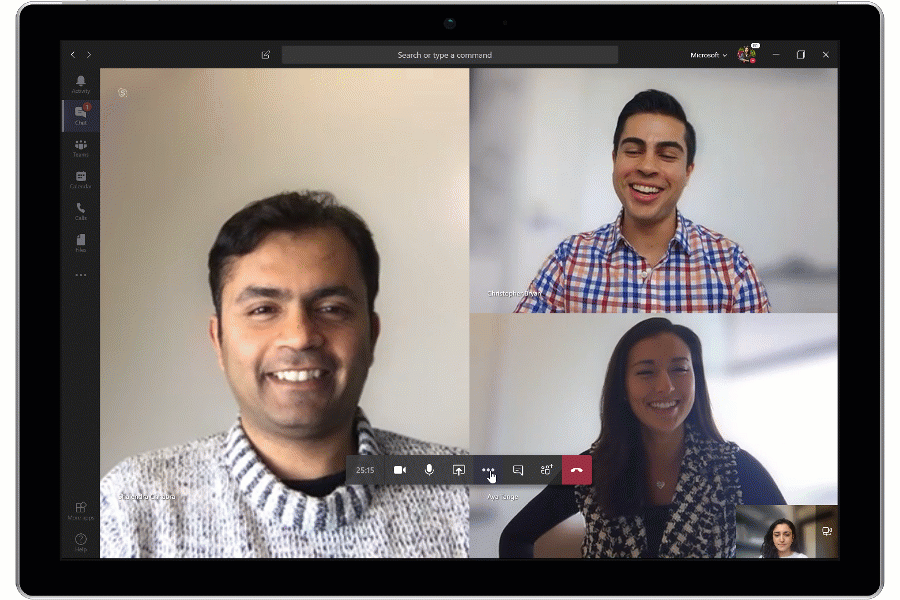
An inclusive digital partnership
One story that really crystallises to me the impact of accessible tools on culture is our partnership with Sodexo. As the leading provider of Quality of Life services for working professionals, Sodexo wanted to offer new and innovative services to its clients. They also wanted to further develop employment opportunities for people with disabilities. Therefore, they chose Microsoft 365 to enable communications and collaboration across its business, giving these tools to frontline workers. What they saw was a more empowered team and a whole organisational culture of inclusivity and collaboration. They also saw the digital skills of their frontline workers increase. This meant that their services to their customers also improved.
How tech can drive inclusion
Organisations should want everyone to feel connected be able to collaborate and coexist efficiently. Giving people accessible tools will ensure that they have the confidence to do the job as best they can, while still feeling part of a bigger picture. They’ll be able to spend more time on value-added tasks and be more engaged.
We’ve talked a lot about how accessible tools can help foster a culture of innovation and inclusivity. But it’s important to remember that it also makes good business sense. According to the Harvard Business Review’s The Value of Belonging at Work, if employees feel like they belong, you will see a 56 percent increase in job performance, a 50 percent drop in turnover risk and 75 percent in reduction of sick days.
Take action
So now it’s time to take action. Start the conversation with your business leaders and HR about empowering your frontline workers with technology. Take some time for yourself to learn how to enable inclusive features for your employees and share this information out for everyone to do so. See what includes accessible features are built into Microsoft 365, for example by learning fundamentals and best practices on Microsoft Learn. And if you have any questions, you can always reach out to our Disability Answer Desk and we will help in any way we can.
Remember this is a journey. Listen to your employees and see what they feel they need to be able to do their best work. By including everyone in your journey you will be more likely to be successful and foster that inclusive culture you want.
Find out more
Watch the on-demand session on building an inclusive frontline workforce
Re-imagine the new world of work
Discover how to build an inclusive culture in the new world of world
About the author
 Hasan is a Product Marketing Manager and UK Lead for our frontline worker business. Having been a frontline worker across many roles, his passion is helping people be their best, through the power of technology. Having emigrated to the UK at an early age, he enjoys staying true to his values of helping all people through storytelling and empowering everyone to achieve more. Hasan has held several roles across Product Management, Marketing and Retail, across the UK.
Hasan is a Product Marketing Manager and UK Lead for our frontline worker business. Having been a frontline worker across many roles, his passion is helping people be their best, through the power of technology. Having emigrated to the UK at an early age, he enjoys staying true to his values of helping all people through storytelling and empowering everyone to achieve more. Hasan has held several roles across Product Management, Marketing and Retail, across the UK.

